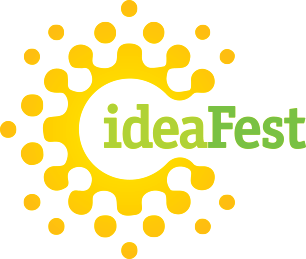Search Presenters & Abstracts
View Presenters & Abstracts by College
Presenters & Abstracts: College of Arts, Humanities and Social Sciences
Kenosha Mural Project
- Jessica JanecekGeographyUndergraduate Student
- Keith StaatsGeographyUndergraduate Student
Working with photographer Ron Larson from the Kenosha Creative Space, a nonprofit organization in Kenosha, Wisconsin. Following the BLM protests, artists took to the streets of Kenosha, Wisconsin to express their feelings and emotions. Ron Larson began photographing the art around the city. We are here to share an interactive story map created to showcase the art around the city.
Kiss Me Kate, Costume Design
- Alexander StearnsTheatre ArtsUndergraduate Student
I was one of the costume designers for HSU's production of Kiss Me Kate; in charge of the costumes of the lead characters, Fred/Petruchio and Lilli/Kate. I'll be presenting Kate's final dress for the finale of the show. After researching many paintings, I designed a dress that harkened to the Renaissance time period. The dress was built by a team of costume technicians, including myself.
L.A. Sheriff’s “Our Mission, Creed, and Core Values”: a Subversive Standpoint
- Cristian MartinezEnglishUndergraduate Student
The Los Angeles Sheriff’s Department has strategically created a message in hopes of persuading its population that they stand for justice. “Our Mission, Creed, and Core Values,” may be considered an honorable message to its preferred audience. But from a subversive standpoint, the message is considered to target and criminalize marginalized citizens. This study will demonstrate how the hegemony uses militarized rhetoric to support their war on our communities. Ultimately, this research seeks to educate its audience about the ways in which messages, those similar to the LASD’s, continue to instigate hostilities towards and among the marginalized population.
Le Cygne (The Swan) by Camille Saint-Saens
- Emily MorseMusicUndergraduate Student
- Aaron LopezMusicUndergraduate Student
The Swan is the 13th movement of the 'The Carnival of the Animals' by Camille Saint-Saëns. Also known as 'Le Cygne' in French, this is one of the most famous cello works originally scored for cello accompanied by two pianos. Like the animal it is named after, this is a very graceful and elegant piece. For this performance, my classmate Aaron Lopez is accompanying me on piano while I am playing the cello.
Learning in a classroom setting: Audio, Visual, or Audiovisual Learning, which is best for recall?
- Cassady McLaughlinPsychology DepartmentGraduate Student
- Summer ThornfeldtPsychology DepartmentGraduate Student
- Zhelin WuPsychology DepartmentGraduate Student
- Caitlin MacePsychology DepartmentUndergraduate Student
- Valerie SettaniPsychology DepartmentUndergraduate Student
- Mitchell HinmanPsychology DepartmentUndergraduate Student
Students are impacted by differential modes of stimuli presentation while learning in multimedia environments. In the classroom, lecturers often display written text that corresponds with their spoken instruction, but how are students impacted by this? This study aims to address how visual (text), auditory, and pictorial stimuli in isolation or combination pertaining to the same novel subject affect recall accuracy. A cross-sectional between-subjects design was utilized in the study, and we found that students did better on recall questions when they were either taught with auditory, textual and pictorial information, or taught with auditory and pictorial information.
Learning the Ways of the Force
- Michael JuettePolitical ScienceUndergraduate Student
Within any county there are economic forces that are constantly at odds with each other, and Humboldt County is no exception. Currently, it has been recognized that the skills in some of Humboldt County’s workforce are struggling to keep up with what is expected by employers. The goal of this project is to assess the needs of these potential employers, demonstrate how employers are coping with the issue, and to explore possible avenues that may improve the relationship between the potential employer’s and employee’s recruitment experience. It is the hope that informing the public of this issue may lend a hand in improving workforce readiness in Humboldt County.
LEEROY JENKINS: Identity Formation, Investment, and Social Structure of Guilds in World of Warcraft
- Rachael HellerAnthropologyUndergraduate Student
World of Warcraft is a story-based fantasy adventure massively multiplayer online role-playing game in which players customize characters and play through game content individually or in a group. Guilds in WoW are semi-permanent groups of players that come together with a common in-game agenda. Through participant observation and interviews, this project studies one guild within WoW, focusing on personal and group identity formation, and the relationship between perceived value and monetary/time investment. Examination of these topics builds reality within a fictional, virtual setting, and seeks to provide insight into the formation of structured subgroups within a larger society.
Leeroy Jenkins; Identity Formation, Investment, and Social Structure of a Guild in World of Warcraft
- Rachael HellerAnthropologyUndergraduate Student
World of Warcraft, an online fantasy game, connects more than 10 million players worldwide in a multiplayer story-based adventure. Each player builds a character and plays through game content individually or in groups called guilds. Through participant observation over the course of a year, this study of one guild found: social/hierarchical bonds/structure are reinforced in all group activities; and the correlation between individual time investment in guild play/communication and group cohesion. This research contributes to existing scholarship on online sociality by providing insight into the role online gaming plays in connecting people across time and space in new forms of community.
LEVEE STORIES UNEARTHED
- Kathleen C. BromleyApplied AnthropologyGraduate Student
LEVEE STORIES UNEARTHED: FIELD AND MIXED METHODS IN SUPPORT FOR AN EXPEDITED RECONNAISSANCE STUDY
Levee Stories: Myths of Management
- K BromleyApplied AnthropologyGraduate Student
What is the cultural significance that the Redwood Creek Levee System carries in Orick, California? The purpose of this study is to further investigate the history and management of the levee system and to apply the findings. By tracking the levee's ethos using multiple research methods and publishing, the study hopes to better understand roles humans play with regard to the levee system and to each other. Through collaboration and greater understanding of the levee system research will be revealed in the Orick wikipedia page and within an Omeka exhibit site.
